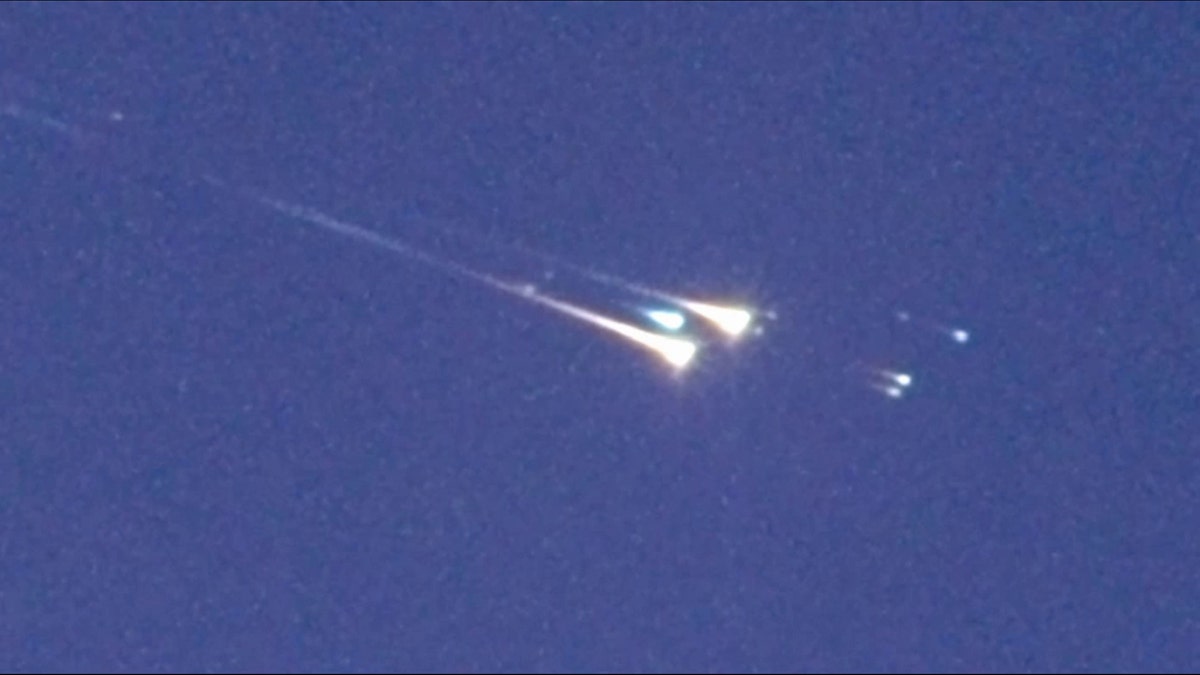
WT1190F enters Earth's atmosphere (CREDIT: IAC/UAE Space Agency/NASA/ESA).
A mysterious piece of space junk dubbed WT1190F made a spectacular re-entry into Earth’s atmosphere early Friday, as predicted by scientists. Experts, however, are unsure whether it splashed down in the Indian Ocean, as initially expected.
“It appears that [the re-entry] happened as predicted,” explained a spokesman for the European Space Agency (ESA), in an email to FoxNews.com, noting that scientists successfully monitored the object from an aircraft.
Related: Buzz Aldrin commemorates his first ever spacewalk with historic selfie
Experts had forecast that the object would enter Earth’s atmosphere at about 1:20 a.m. ET and had predicted a splashdown in the Indian Ocean about 62 miles off the coast of Sri Lanka.
The ESA spokesman explained that a more detailed analysis of WT1190F’s entry path, and whether the debris actually reached the ocean will be undertaken.
Related: Scientists discover closest Earth-sized exoplanet
A stunning video posted to YouTube by Astronomy Center shows WT1190F’s re-entry and apparent breakup. “The International Astronomical Center (IAC) and the United Arab Emirates Space Agency hosted a team of veteran U.S. and German observers of spacecraft re-entries to study the re-entry of an approximately 1-meter (3.2-feet) piece of space debris near Sri Lanka,” it explained, in a post accompanying the YouTube video.
The object, which was discovered by the Catalina Sky Survey, has been closely monitored by the European Space Agency’s Near Earth Object Coordination Centre (NEOCC).
Related: Mars’ moon Phobos could be headed for destruction
What the object was remains a mystery. The debris had been orbiting Earth for years on an elliptical path, according to Space.com. Last month Jonathan McDowell, an astrophysicist at the Harvard–Smithsonian Center for Astrophysics in Cambridge, Mass. told Nature that WT1190F could be a spent rocket stage, a paneling shed from a recent moon mission, or even a piece of debris dating back to the Apollo missions.
The ESA’s NEOCC has identified WT1190F as a valuable opportunity for scientists. “First, the object is interesting to better understand the re-entry of satellites and debris from high orbits,” it explained, in a statement released last month. “Second, it provides us with an ideal opportunity to test our readiness for any possible future events involving an asteroid, since the components of this scenario, from discovery to impact, are all very similar.”
Follow James Rogers on Twitter @jamesjrogers
